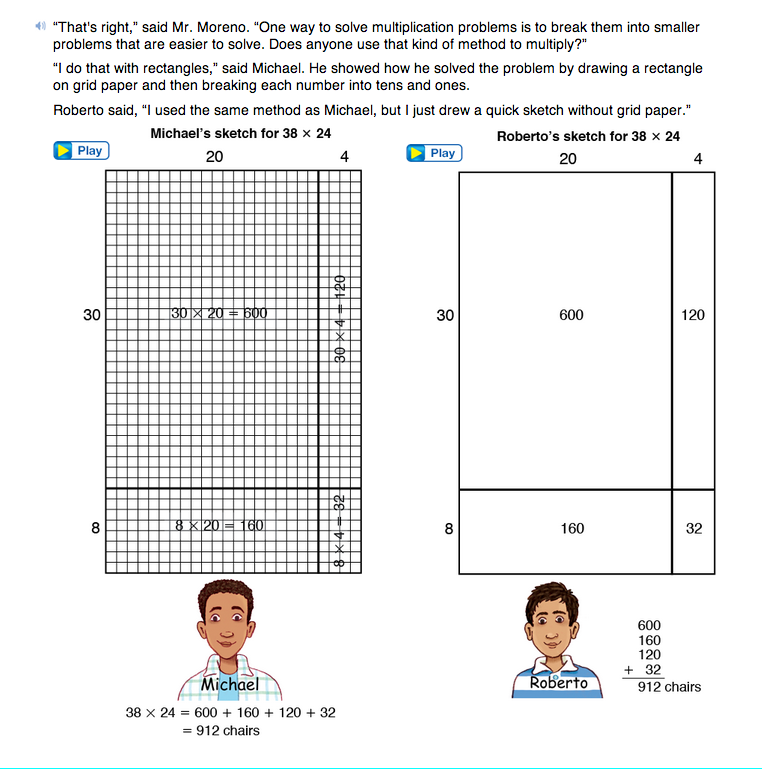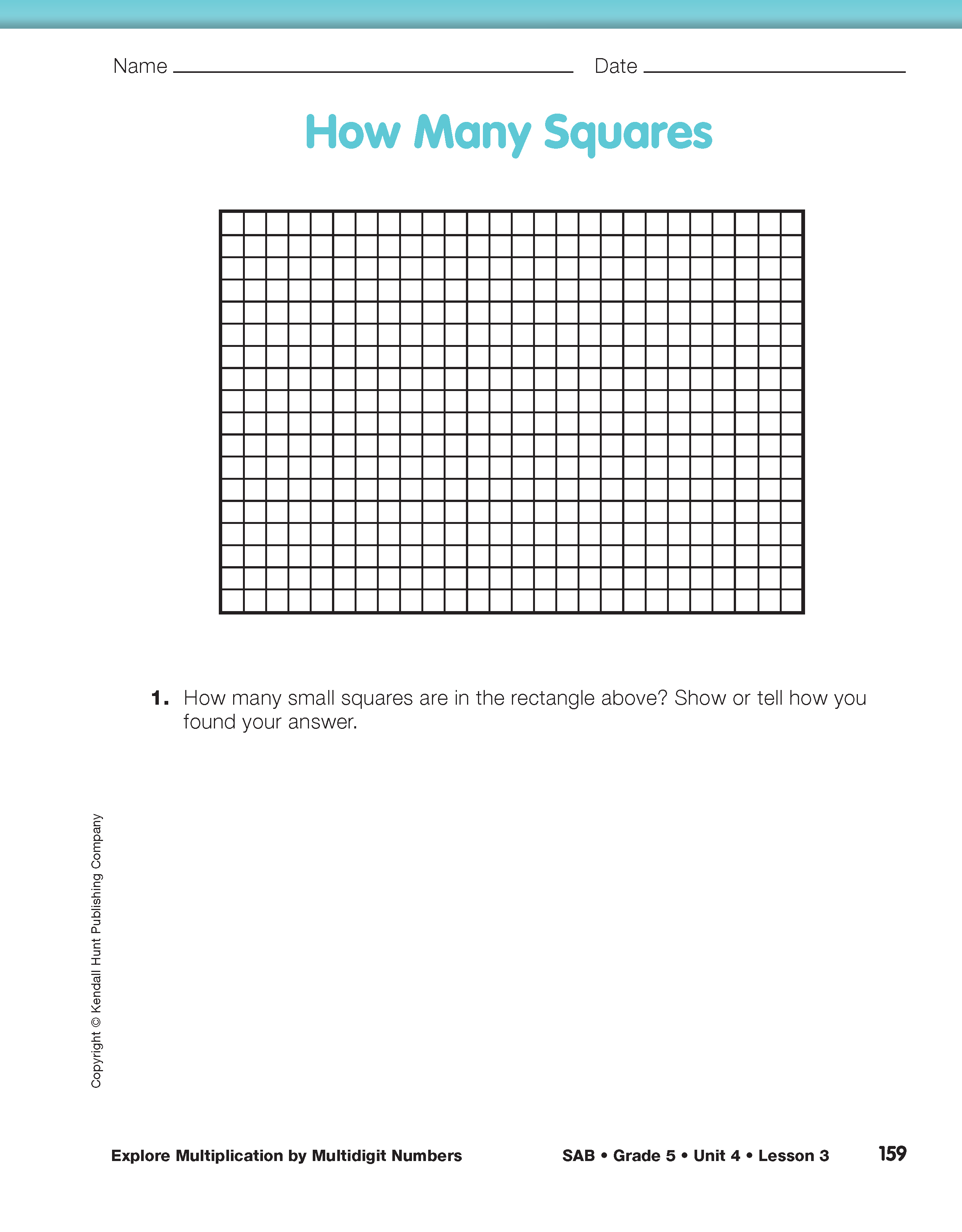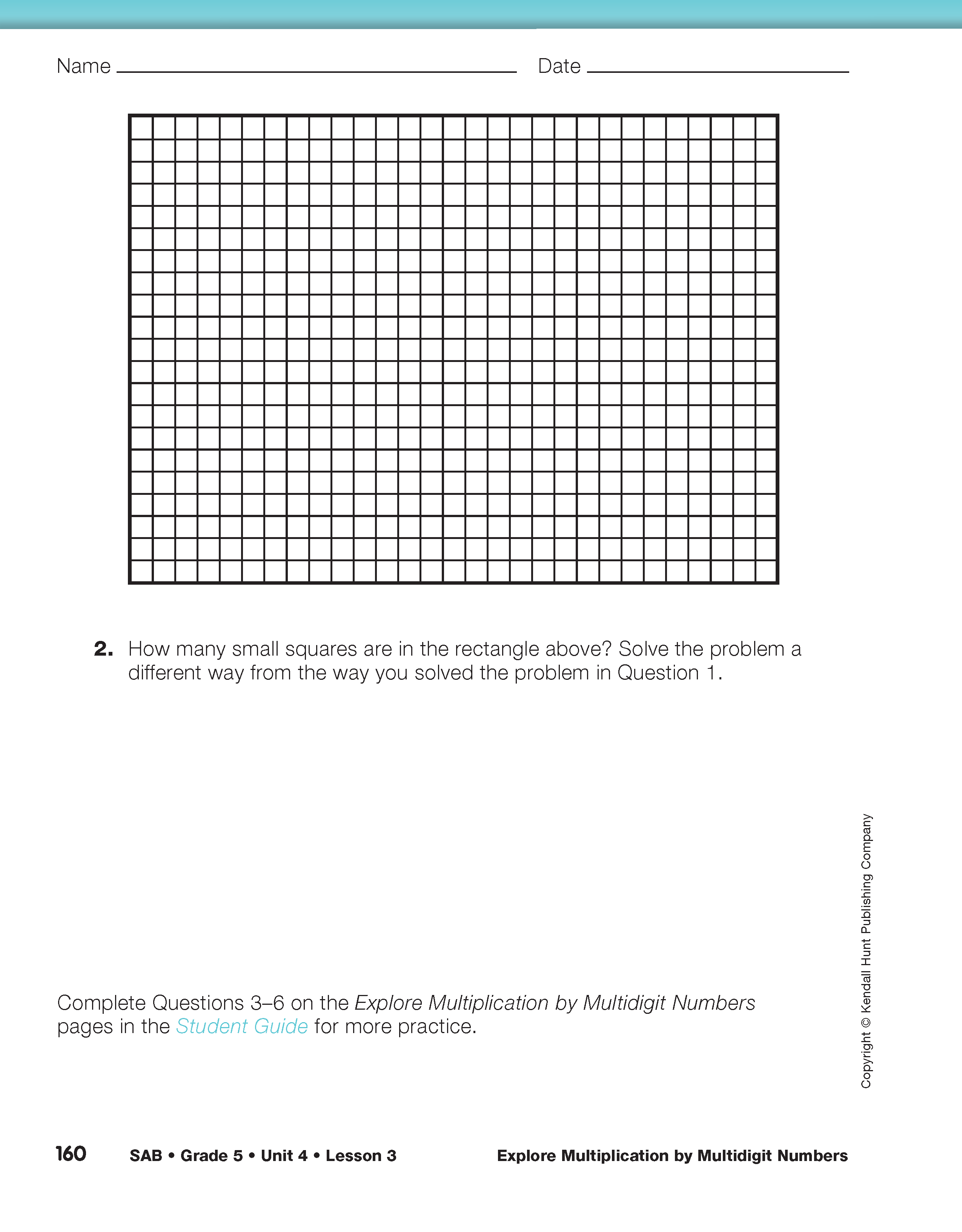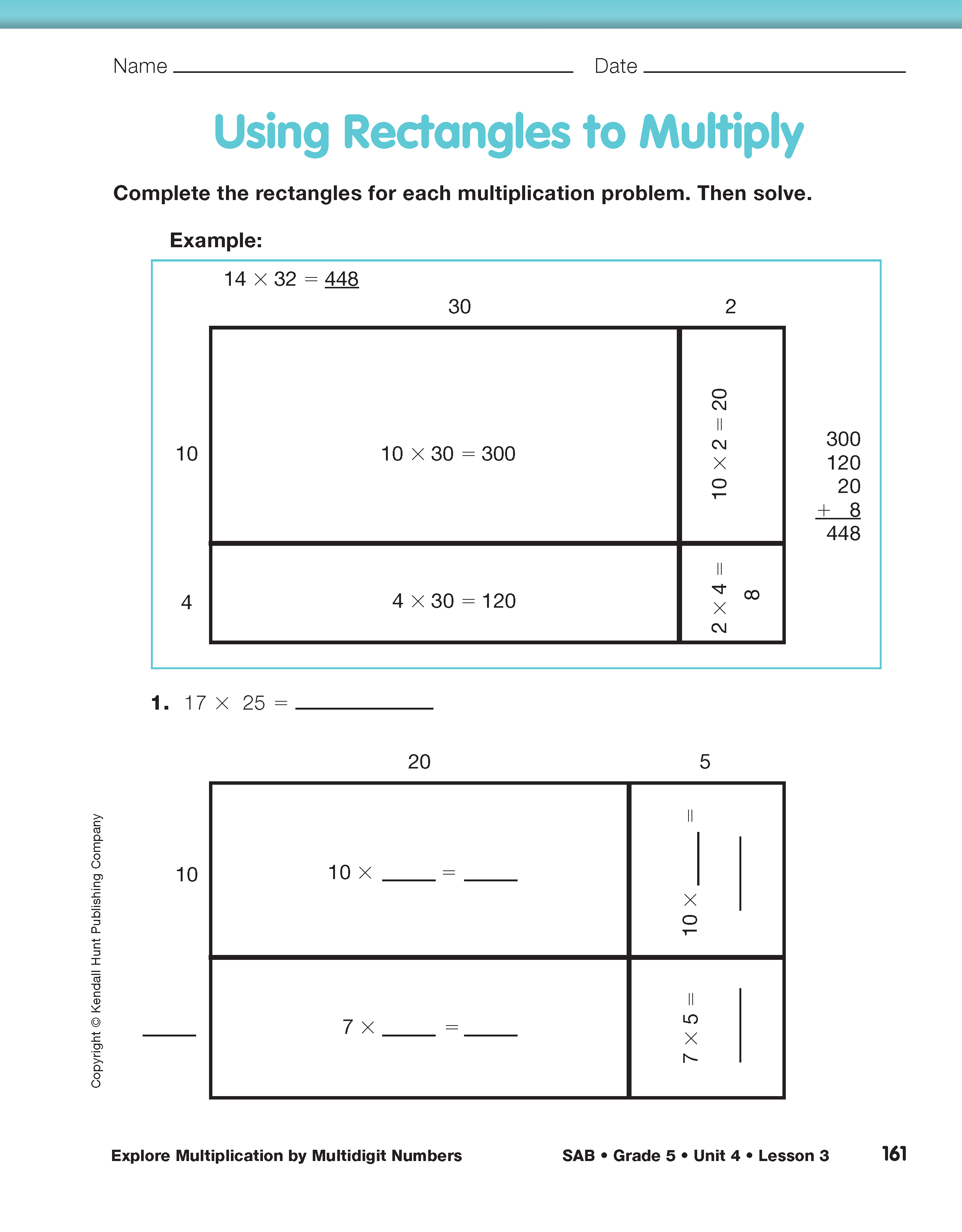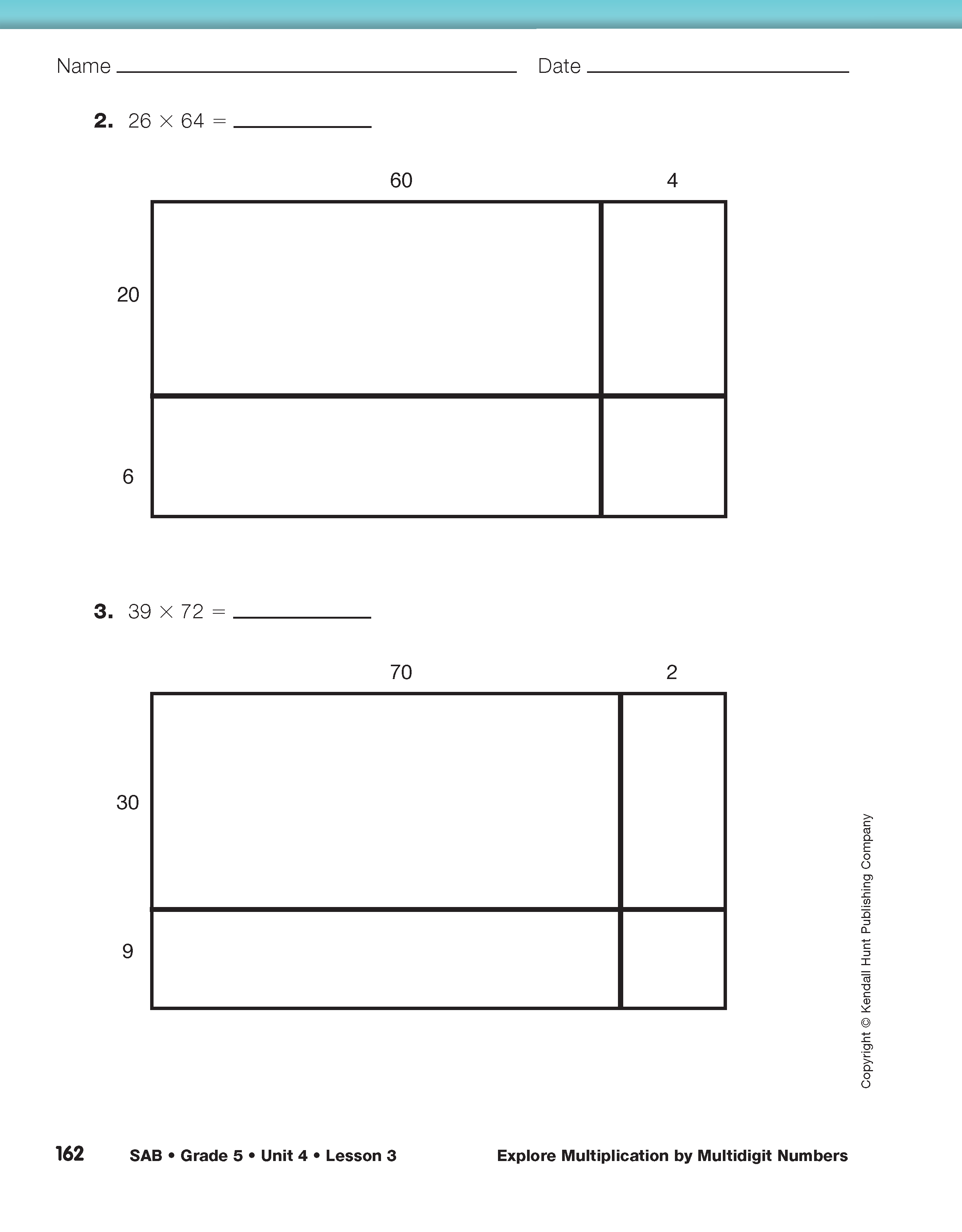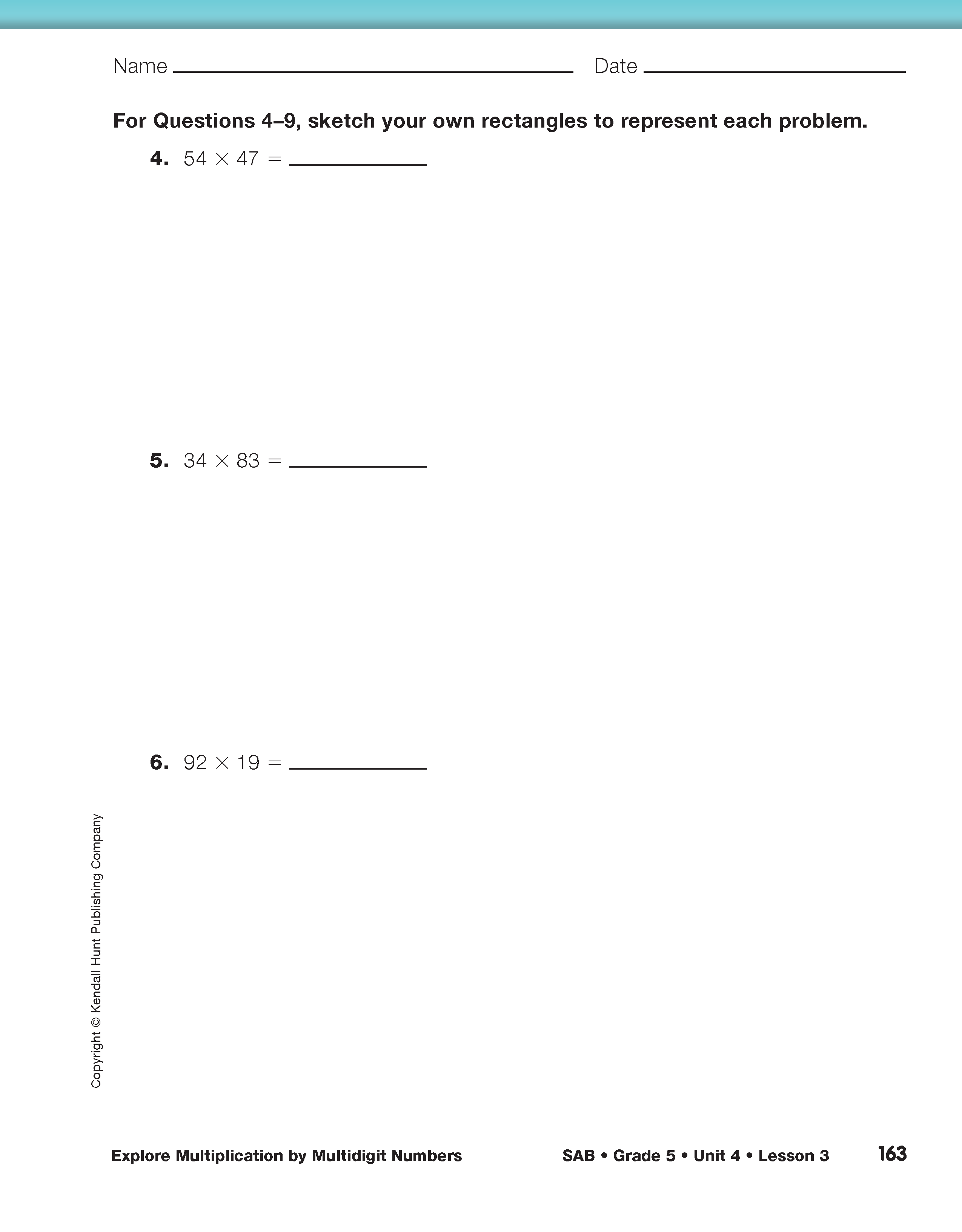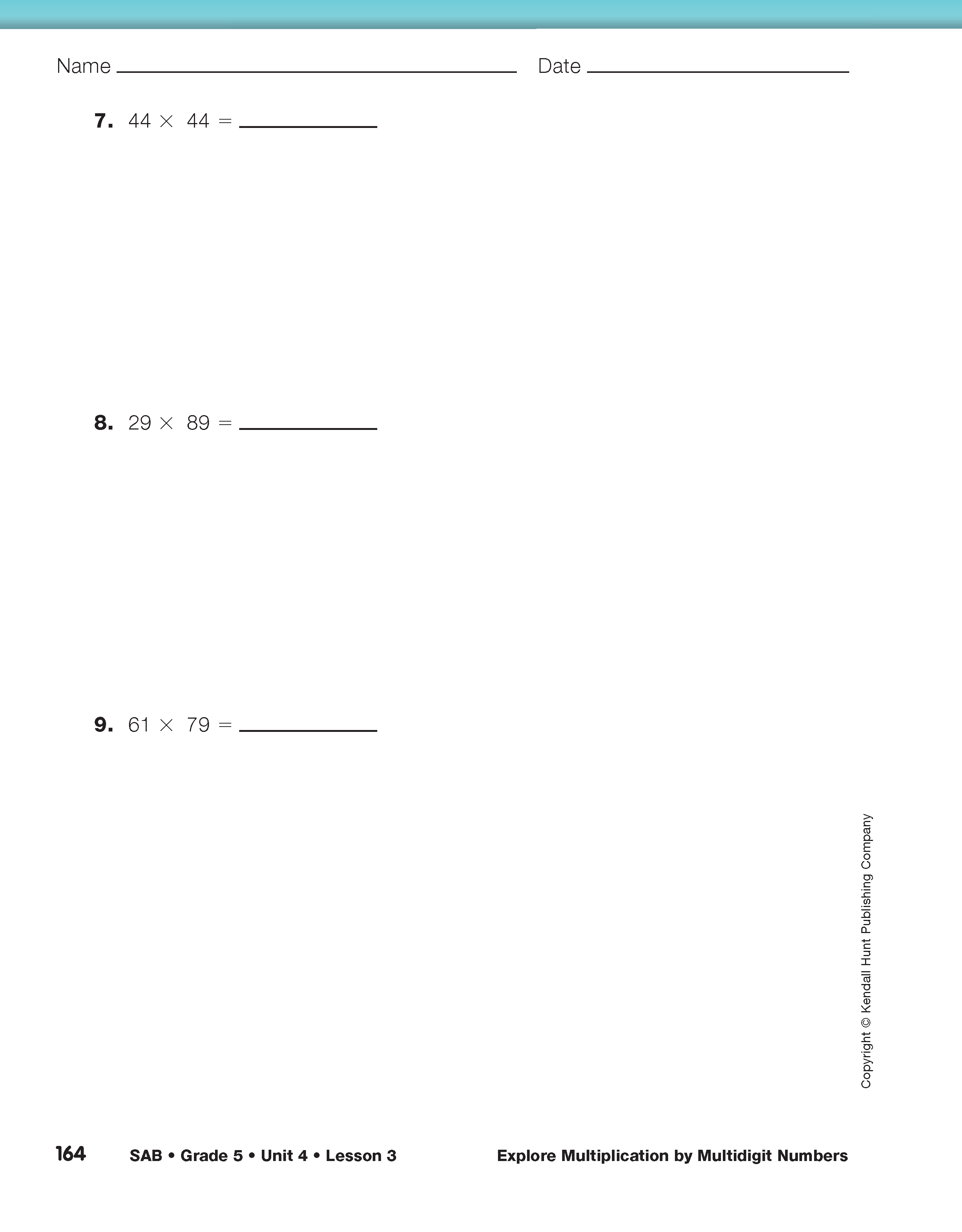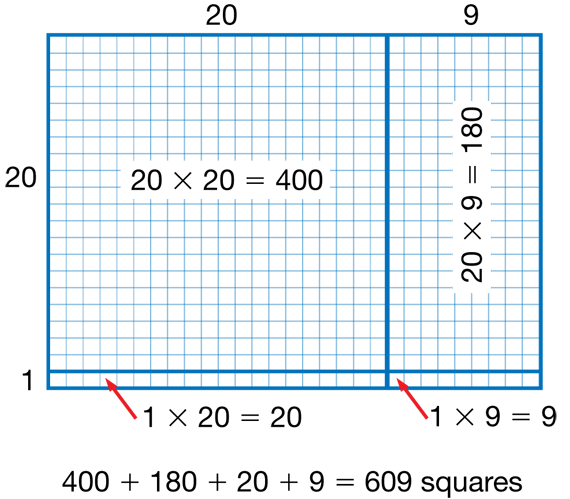Explore Multiplication by Multidigit Numbers
Est. Class Sessions: 2–3Developing the Lesson
Part 2. Two-Digit Multiplication Using Rectangles
Explore Break-Apart Rectangles. Show students the rectangle in Question 1 on a display of the How Many Squares pages in the Student Activity Book. Direct them to find the number of small squares in the rectangle.
Then ask:
Allow students several minutes to solve the problem. Remind them to show their method on the page. Pay attention to the strategies students are using.
If the majority of students are using a similar strategy or algorithm, ask:
Ask students to share their strategies with the class. Students should record their strategies so that they can be compared and discussed by the class. Students can use rulers to help them partition the rectangles. Students who use the grid to solve the problem will need to use a display of the Half-Centimeter Grid Paper Master. Others can use the board or chart paper.
Sample student responses are shown in Figure 2.
Discuss student strategies. Sample Dialog 2 has a possible discussion for the solutions shown in Figure 2.
Ask students to do Question 2 on the How Many Squares pages using a different method for dividing up the rectangle from the one they used for the previous problem. If students are having difficulty thinking of new methods on their own, suggest that they try one of the methods that was shared for the previous problem. After giving students several minutes to solve the problem, ask them to explain how they solved the problem to a partner. Then ask two or three students to explain their strategies to the class. You may want to refer to a method by the name of the student who explained it initially, such as “Tanya's Method.”
Continue recording students' methods on a display of Question 2 in the How Many Squares pages for any methods that have not yet come up. A sample solution is shown in Figure 3.
Use Rectangles to Multiply. Read the vignette in the Setting Up for the Play section on the Explore Multiplication by Multidigit Numbers pages in the Student Guide. Ask students to study the rectangles Michael and Roberto drew to represent 38 × 24.
Ask:
Discuss Questions 3–6 with the whole class. In Question 3, students identify each part of the rectangle as a partial product of the multiplication problem.
Question 4 develops the concept that for a two-digit by two-digit problem, the numbers in the tens × tens rectangle always result in the largest partial product. The numbers in the ones × ones rectangle place result in the smallest partial product. This concept will be revisited again in Lesson 5.
Question 5 leads students to consider a method of estimation that flows from the rectangular array model. Students may respond that an estimate of 600 is not very close when the actual answer is 912. This model presents a visual sense of why the estimate is low (much of the product comes from the other three partial products).
In Question 6, students need not solve the problem, only decide how many smaller parts (or partial products) there would be if they multiplied a three-digit number by a two-digit number using the rectangle method. Suggest to students that they draw the rectangle model.
Ask students to complete the Using Rectangles to Multiply pages in the Student Activity Book with a partner.














